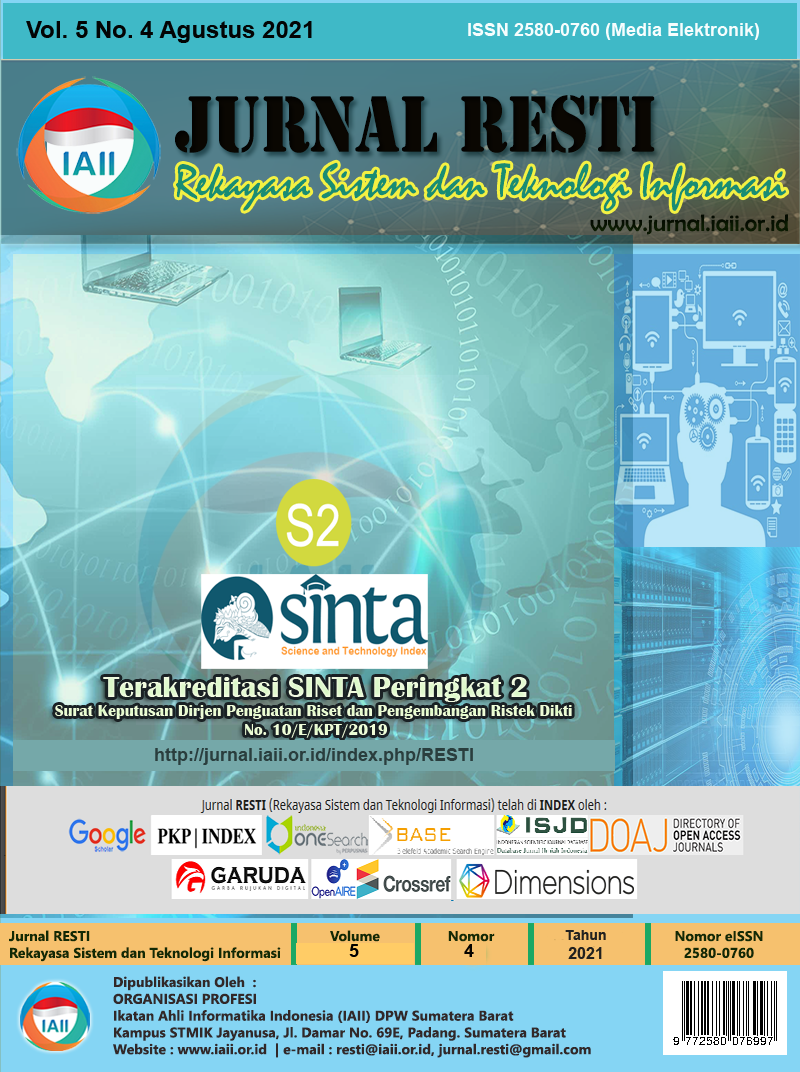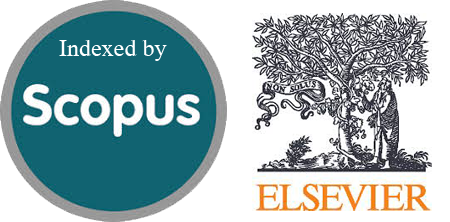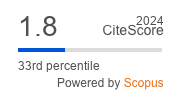Implementasi Sistem Otentikasi Dokumen Berbasis Quick Response (QR) Code dan Digital Signature
Abstract
The authenticity and integrity of documents are essential in data exchange and communication. Digital documents must be verifiable for their authenticity and integrity by all parties that use the documents. Generally, digital documents can be authenticated by using digital signatures. This study aims to implement a document authentication system based on Quick Response (QR) code and digital signature. As the case study, the document authentication system is implemented to generate digital signatures for student’s certificate documents. Furthermore, the system can also verify the authenticity of the certificate documents. Creating a digital signature requires a hash function algorithm for generating the message digest of the document. In addition, an algorithm to generate the public key and the private key used in the encryption/decryption of the message digest is also needed. The hash function utilized in this study is the Secure Hash Algorithm-256 (SHA-256), while the algorithm used for encryption/decryption is the Rivest-Shamir-Adleman (RSA) algorithm. The system is evaluated by verifying 30 student certificate documents, of which 15 of them were certificates with QR code signature generated by the system and the other 15 were certificates with QR code signature generated using a random QR code generator. The system’s testing results demonstrate that the system can ensure the authenticity and integrity of the signed certificate documents to prevent document falsification. All documents that contain random QR codes were correctly identified as false documents.
Downloads
References
ISO/IEC, “ISO/IEC 18004:2015 Information technology — Automatic identification and data capture techniques — QR Code bar code symbology specification,” 2015. https://www.iso.org/standard/62021.html.
A. G. P. Suratma and A. Azis, “Tanda Tangan Digital Menggunakan QR Code dengan Metode Advanced Encryption Standard,” Techno, vol. 18, no. 1, pp. 59–68, 2017, doi: 10.30595/techno.v18i1.1482.
R. Kurniawan, R. F. Sari, and N. Azizah, “Sistem Validasi Keaslian Dokumen Digital Berbasis QR-Code,” J. Teknol. Inf., vol. 4, no. 2, pp. 321–327, 2020, [Online]. Available: http://www.jurnal.una.ac.id/index.php/jurti/article/viewFile/1722/1468.
E. C. Prabowo and I. Afrianto, “Penerapan Digital Signature dan Kriptografi pada Otentikasi Sertifikat Tanah Digital,” J. Ilm. Komput. dan Inform., vol. 6, no. 2, pp. 83–90, 2017, doi: 10.34010/KOMPUTA.V6I2.2481.
E. Ardhianto and N. Wakhidah, “Pengembangan Metode Otentikasi Keaslian Ijasah dengan Memanfaatkan Gambar QR Code,” Transformatika, vol. 13, no. 2, pp. 35–41, 2016, doi: 10.26623/transformatika.v13i2.325.
F. Nuraeni, Y. H. Agustin, D. Kurniadi, and I. D. Ariyanti, “Implementasi Skema QR-Code dan Digital Signature menggunakan Kombinasi Algoritma RSA dan AES untuk Pengamanan Data Sertifikat Elektronik,” in Seminar Nasional Teknologi Informasi, Komunikasi dan Industri (SNTIKI) 12, 2020, pp. 43–52.
T. Yuniati and M. F. Sidiq, “Literature Review: Legalisasi Dokumen Elektronik Menggunakan Tanda Tangan Digital sebagai Alternatif Pengesahan Dokumen di Masa Pandemi,” J. RESTI (Rekayasa Sist. dan Teknol. Informasi), vol. 4, no. 6, pp. 1058–1069, 2020, doi: 10.29207/resti.v4i6.2502.
B. P. Pratiwi, M. R. Pratama, and T. A. Cahyanto, “Implementasi Algoritma AES (Advanced Encryption Standard) dan RSA (Rivest Shamir Adleman) untuk Pengamanan Surat di Humanika,” Universitas Muhammadiyah Jember, 2019.
M. Ihwani, “Model Keamanan Informasi Berbasis Digital Signature dengan Algoritma RSA,” CESSJ (Journal Comput. Eng. Syst. Sci., vol. 1, no. 1, pp. 15–20, 2016, doi: 10.24114/cess.v1i1.4037.
E. F. Nurdiansyah and I. Afrianto, “Implementasi QR Code sebagai Tiket Masuk Event dengan Memperhitungkan Tingkat Koreksi Kesalahan,” J. Teknol. dan Inf., vol. 7, no. 2, pp. 25–44, 2018, doi: 10.34010/jati.v7i2.491.
T. András, “WebCodeCamJS,” 2018. https://github.com/andrastoth/webcodecamjs.
M. L. Sholeh and L. A. Muharom, “Smart Presensi Menggunakan QR-Code dengan Enkripsi Vigenere Cipher,” Limits J. Math. Its Appl., vol. 13, no. 2, pp. 31–44, 2016, doi: 10.12962/j1829605X.v13i2.1933.
Copyright (c) 2021 Jurnal RESTI (Rekayasa Sistem dan Teknologi Informasi)

This work is licensed under a Creative Commons Attribution 4.0 International License.
Copyright in each article belongs to the author
- The author acknowledges that the RESTI Journal (System Engineering and Information Technology) is the first publisher to publish with a license Creative Commons Attribution 4.0 International License.
- Authors can enter writing separately, arrange the non-exclusive distribution of manuscripts that have been published in this journal into other versions (eg sent to the author's institutional repository, publication in a book, etc.), by acknowledging that the manuscript has been published for the first time in the RESTI (Rekayasa Sistem dan Teknologi Informasi) journal ;








